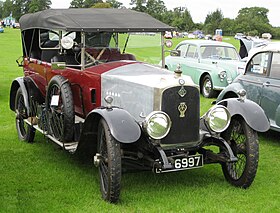
The Mercedes-Benz W186 model 300 was a four-door luxury tourer produced by Mercedes-Benz between 1951 and 1957. The company's largest and most prestigious automobile, it was the Maybach of its day, elegant, powerful, exclusive, and expensive. Three versions were produced in succession, known informally as the 300a, 300b, and 300c. An enlarged "300d" variant built on the W189 chassis succeeded it in late 1957.

The Austin Ten is a small car that was produced by Austin. It was launched on 19 April 1932 and was Austin's best-selling car in the 1930s and continued in production, with upgrades, until 1947. It fitted in between their "baby" Austin Seven which had been introduced in 1922 and their various Austin Twelves which had been updated in January 1931.

The Citroën Type C was a light car made by the French Citroën car company between 1922 and 1926 with almost 83,000 units being made. Known as Citroën 5HP or 5CV in France and 7.5HP in Britain, it was the second model of automobile designed and marketed by André Citroën, between 1922 and 1926. It was also the first car mass-produced car.It followed the 10HP ”Type A “ which was replaced by the 10HP “B2” ; they were the first European mass-produced cars.

The Rolls-Royce Twenty built between 1922 and 1929 was Rolls-Royce's "small car" for the 1920s and was produced alongside the 40/50 Silver Ghost and the successor to the 40/50, the Phantom. It was intended to appeal to owner-drivers but many were sold to customers with chauffeurs.
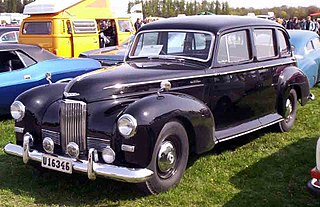
The Humber Pullman is a four-door limousine which was introduced by the British Humber company in 1930 as a successor to the Humber 20/65 hp and long-wheelbase version of the Humber Snipe.
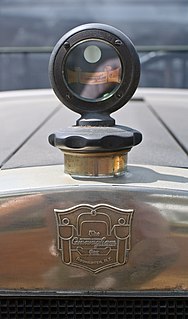
The Cunningham automobile was a pioneering American production automobile, one of the earliest vehicles in the advent of the automotive age. It was produced from 1896 to 1931 in Rochester, New York by James Cunningham, Son and Company.

The Rover 12 was a name given to several medium-sized family cars from the British Rover car company between 1905 and 1948.

The Vauxhall 30–98 is a car manufactured by Vauxhall at Luton, Bedfordshire from 1913 to 1927. In its day, its best-known configuration was the Vauxhall Velox standard 4-seater with open tourer body. Vauxhall's own description was the 30–98 hp Vauxhall-Velox sporting car. The 30–98 is also known to enthusiasts by Vauxhall's chassis code E.
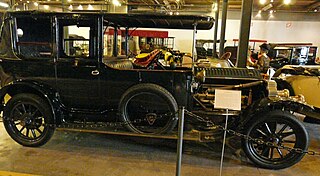
The Vauxhall 27, 30 and 35 h.p. is a large six cylinder car manufactured by Vauxhall from 1910 to 1914. The 27 h.p. was Vauxhall's first six-cylinder car.
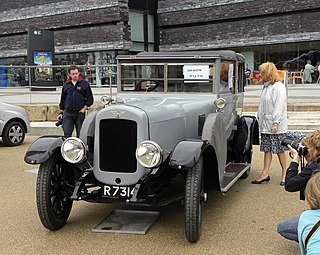
Austin Twenty is a large car introduced by Austin after the end of the First World War, in April 1919 and continued in production until 1930. After the Austin 20/6 model was introduced in 1927, the first model was referred to as the Austin 20/4.
The Rover 16/50 and Rover 16 are mid-sized cars which were produced by Rover from 1926 to 1929 and non-continuously from 1936 to 1947 respectively.

The Austin 40 hp is a 4-cylinder motor car launched at the Olympia Motor Show in November 1907. Manufactured by Austin at Longbridge, Northfield, Birmingham, it was the first variant from Austin's initial plans for a two model range of a 15 hp —which they had dropped—and a 25 hp car.

The Austin Eighteen is a large saloon car, supplied in two different wheelbases to carry five or seven passengers, that was introduced by Austin on 14 July 1937. Its engine and front seat were mounted nine inches further forward than on the old York Sixteen it replaced. The chassis was also extended three inches to provide a total of twelve inches more passenger space. One result was a relatively short bonnet and a good driving position. Its new shape followed the lines of the other Austin cars introduced the previous autumn and it was remarkable for having a completely flat floor in both front and rear passenger compartments with exceptionally wide doors and draught-free ventilation.

The Vauxhall 20-60 is a four or five-seater saloon, limousine, tourer or coupé-cabriolet manufactured by Vauxhall of Luton. It was announced on 28 September 1927 with a six-cylinder engine and a four-speed gearbox. A cautious move downmarket. "The first time any six-cylinder Vauxhall has been sold under £1000!" "British & Vauxhall". The initial 2.7-litre engine was enlarged to 3-litres after twelve months.
The Austin 20-hp is a mid-sized car premium quality that was made by British manufacturer Austin and first displayed as a chassis in Paris in December 1912, advertised in March 1913 and shown to the public as a complete car at the Olympia Motor Show in November 1913. At that time both the 20 and the 30 were regarded as new models.

Humber Fifteen 15 horsepower cars were medium to large cars, classified as medium weight, with a less powerful than usual engine which attracted less annual taxation and provided more stately progress. The coachwork was superbly finished, specially the tourers, and these cars were much favoured by the professional classes.

The Vauxhall Light 6 is an automobile which was produced by Vauxhall in the United Kingdom from 1933 to 1938.

The Vauxhall 14 is an automobile which was produced by Vauxhall in the United Kingdom from 1922 to 1927.

The Vauxhall Big 6 is a name given to a series of automobiles which was produced by Vauxhall in the United Kingdom from 1934 to 1940. Rolling chassis were also bodied in Australia.
